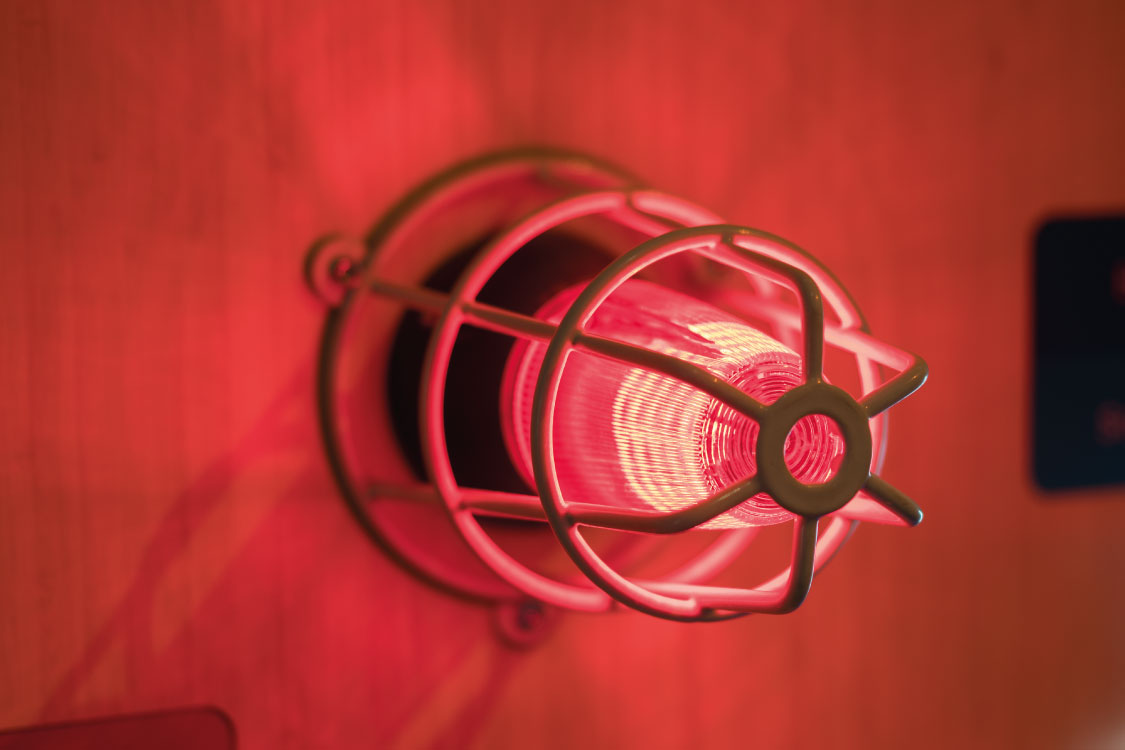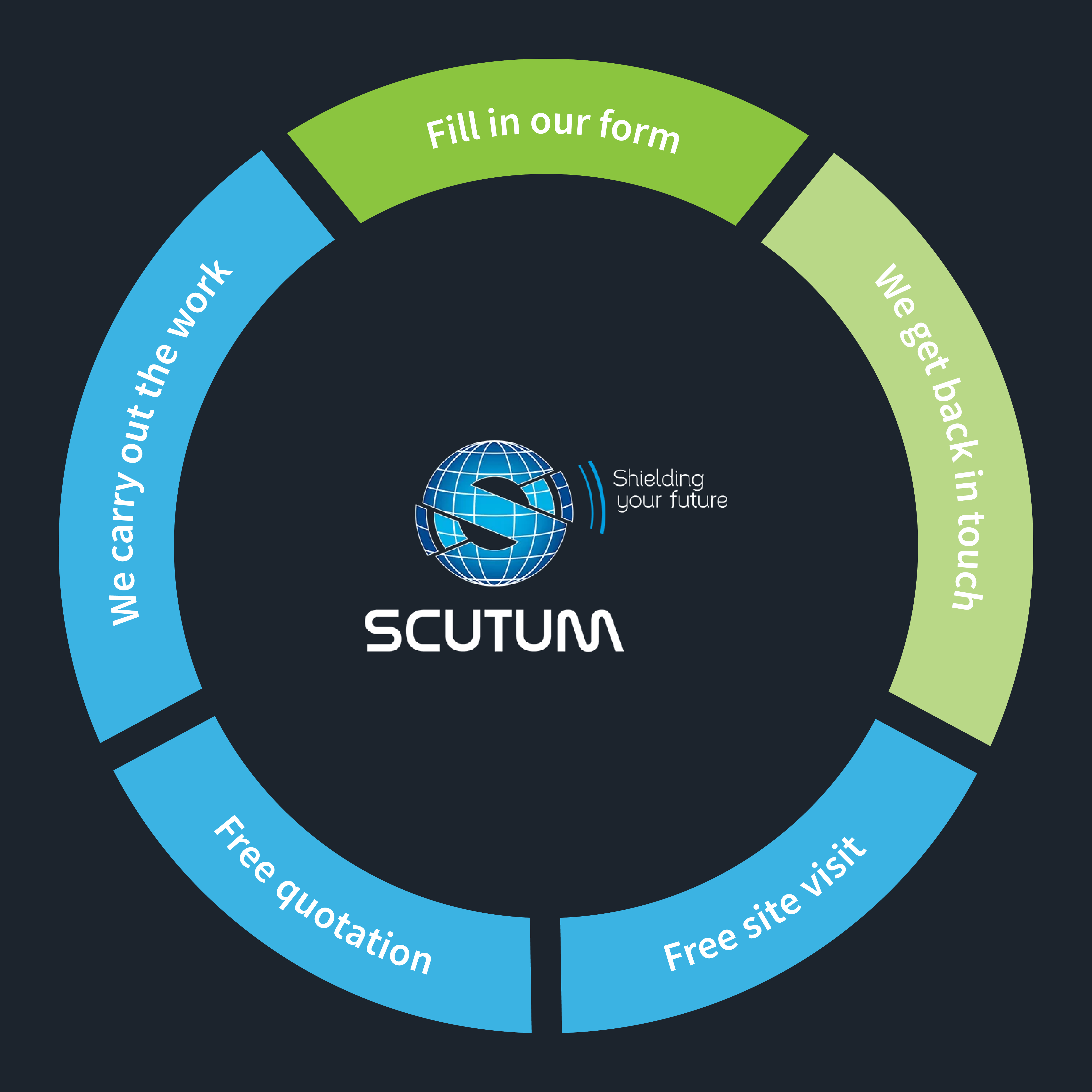Fire Alarm Categories
Fire alarms are a crucial part of any fire protection system, saving millions of people every year from injury or worse. The best fire alarm for a building depends on a number of factors, and it’s imperative that the right category of fire alarm is installed if a fire is to be detected and defeated effectively. In this article, Scutum London will detail the different categories of fire alarms and what they mean.

Category L1
Category L1 alarms are known as Maximum life protection automated alarm systems. These systems feature multiple detectors, sited across every part of a building that a fire could start in. These systems are required to cover almost all parts of a building, and you can commonly find them in roof spaces, most rooms and large cupboards.
Category L2
Additional life protection automated alarm systems are used for rooms with a high risk of fire. They’re designed to alert people in advance of a fire in a different room – in smaller locations, these alarms are often fitted in spaces where the ignition risk is high. In bigger rooms, these systems make use of smoke detectors and fire alarms in the same space.
Category L3
L3 fire alarms are known as standard life protection automated alarm systems. These systems are characterised by alarms situated along escape routes, leading people to fire exits. These alarms are placed across a building, no matter the level of risk in a particular area.
Category L4
Unlike the aforementioned L1 and L2 categories, L4 alarms are only situated along escape routes. They’re primarily used by organisations in low-risk environments, and it’s recommended that they’re used in buildings where escape is relatively simple – multi-storey buildings should use a different system. L4 alarms are known as modest life protection automated alarm systems.
Category L5
Localised life protection automated alarm systems are designed specifically for high-risk areas. Even if a business has another system in use – an L3, for example – it may well use an L5 system in a certain area of the building that poses a particularly high risk of fire, such as a kitchen.
Category P1
Maximum property protection automated alarm system. As the name suggests, these systems are designed with the protection of property as a priority; the system is installed across the whole premises, but they are mainly used to protect areas with high-value, high-importance objects. Whether it’s documents, servers or stock, P5 systems will alert people of a fire in advance so action can be taken.
Category P2
Minimum property protection automated alarm systems. These systems are localised to high-risk areas, with a different system – likely a P1 – used across the rest of the building. By using a combination of systems, a business is protecting everything, not just the high-risk areas.
All alarm systems in the ‘P’ category are for business premises. For domestic premises, we use ‘LD’ alarms, and we’re going to detail them here.
Category LD1
LD1 systems are fitted across all escape routes in a domestic property, other than bathrooms and toilets. The reason they are not fitted in bathrooms and toilets is because these rooms are generally low-risk areas. LD1 systems are known as maximum life protection for a domestic property.
Category LD2
LD2 systems are optimal for medium-sized domestic properties, and they’re used in escape routes, the rooms that connect to said escape routes and also high-risk spaces. In this case, the risk not only includes the chance of ignition, but also the chance of people being harmed – for example, people sleeping would be at a higher risk than others. LD2 systems are also known as additional life protection for a domestic property.
Category LD3
LD3 systems – or standard life protection for a domestic property – are used across a domestic building, not just in high-risk zones. More specifically, these alarms are placed in every area that forms part of an escape route, giving people advanced warning of any developing fire so that they can escape in good time.
If you’re unsure as to which category of fire alarm system will best suit your particular needs, simply contact our friendly team of dedicated experts. We’ve years of experience in fire stopping and prevention and offer a wide range of services and products like fire extinguishers, fire doors and fire safety training.
Request a Callback
Just fill in your details below and we'll get back to you as soon as we can!

About Scutum London
Scutum London is a leading expert in fire safety and security solutions for businesses and organisations located across South East England, including London and Surrey.
From fire alarms, fire extinguishers and fire risk assessments to access control, CCTV and intruder alarm systems – and a lot more besides – we offer a comprehensive range of products and services designed to keep you, your business and your staff and visitors safe.
With decades of industry experience to call on, we’re proud to hold accreditations from leading trade associations and bodies such as British Approvals for Fire Equipment (BAFE), the British Fire Consortium, the Fire Industry Association (FIA) and Security Systems and Alarms Inspection Board (SSAIB).
If you’d like to find out more about Scutum London, get in touch with our friendly team or explore our products and services on our site.

